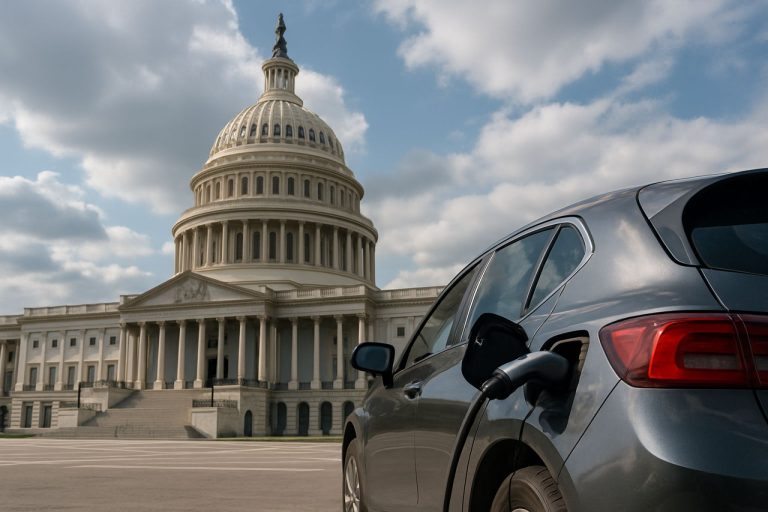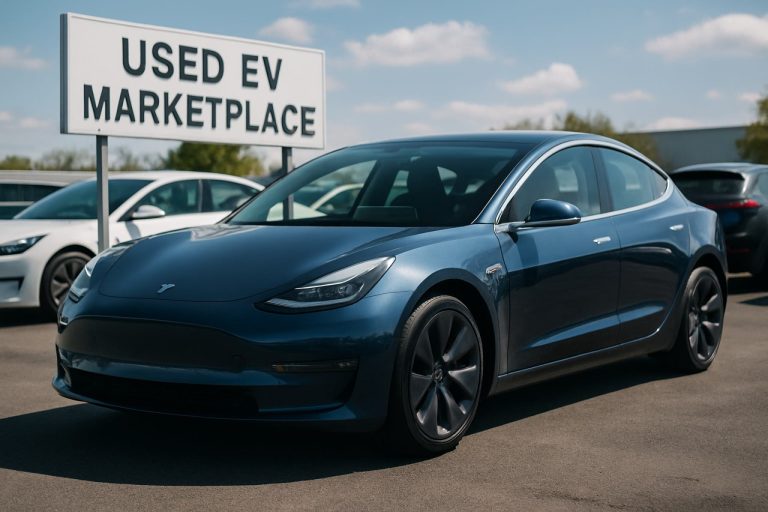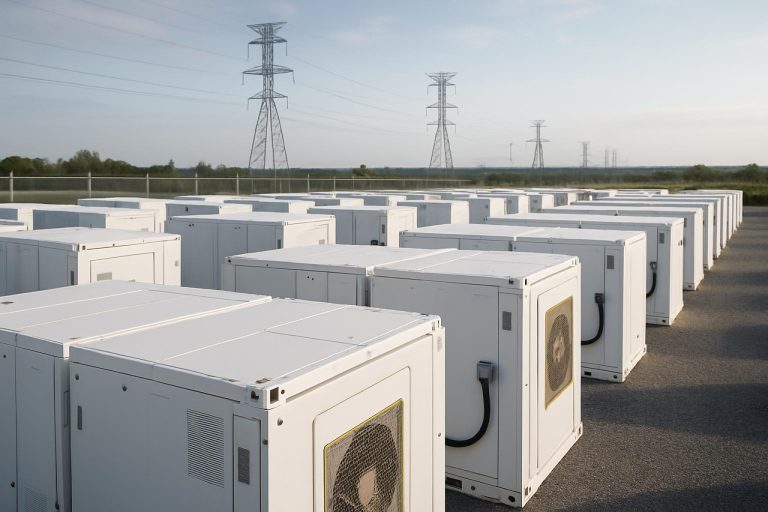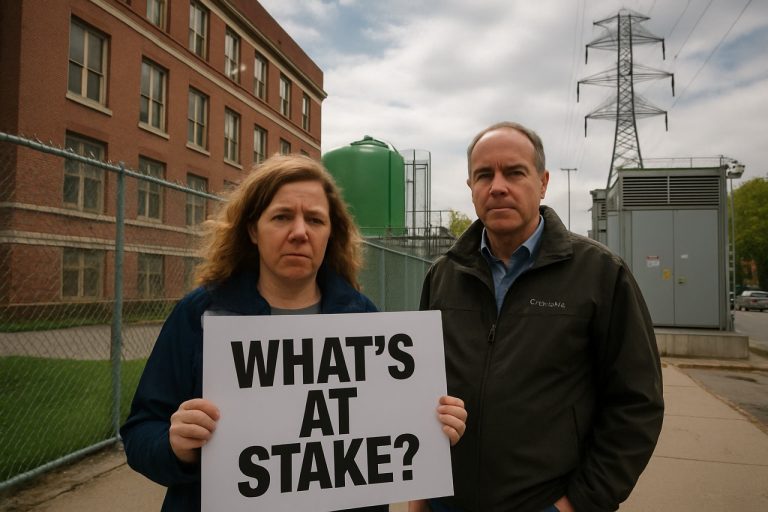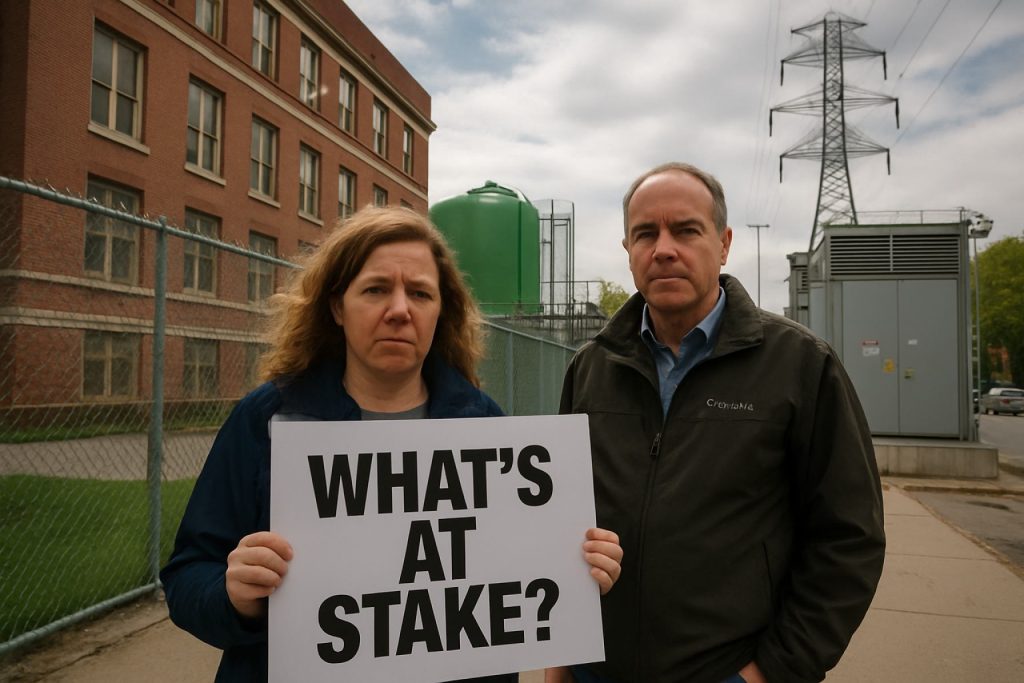
- Bay Ridge faces tension as a new electric vehicle charging station is set to open near PS/IS 104, raising concerns about childhood safety and traffic risks.
- The EV charging project, fast-tracked by New York City’s “City of Yes” zoning updates, is criticized for bypassing local community input.
- Parents and local advocates worry about increased traffic, potential lithium-ion battery fires, and electromagnetic exposure near schoolchildren.
- Experts and agencies indicate that EV-related fire risks are rare and manageable, but residents seek comprehensive safety reviews before proceeding.
- The debate in Brooklyn highlights the ongoing challenge of balancing clean energy infrastructure with neighborhood safety and public trust.
Beneath the watchful gaze of PS/IS 104’s red-brick facade, a storm is gathering—not from nature, but from city hall and Silicon Valley’s latest electric dreams. Bay Ridge stands at a crossroads, where the drive toward a carbon-neutral future collides with anxieties about childhood safety.
On a busy stretch of Fifth Avenue, residents learned of plans for a new electric vehicle charging station across from their school. Backed by lucrative incentives, the initiative reflects New York City’s rush to embrace greener infrastructure—championed by movements like NYC’s own City of Yes. Yet the fast-tracked project, enabled by zoning updates that sidestep local input, has set off alarms among parents who imagine not progress, but peril.
EVgo, an industry giant in electrifying American roads, intends to bulldoze the former KFC at the intersection—an investment echoing the city’s fervor for EV adoption. With construction a whisper away, rumors swirl in the neighborhood: Will this bring clean energy, or catastrophe?
Parents fret over more than lost parking spots. The intersection is infamous for close calls—hit-and-runs and harrowing moments imprinted on parents’ minds. Residents envision a future where an influx of cars jostle for charge while a thousand children cross busy streets for class. What if a blaze—like those occasionally sparked by lithium-ion batteries—erupts with children yards away? What about the invisible thread of electrical radiation? For worried families, the risk seems both immediate and uncertain.
John Ricottone, representing the local education council and voicing the concerns of worried families, calls the plan reckless. In a community letter, he pleads for safety reviews—demanding that civic duty not be eclipsed by easy wins in the race to modernize.
EV charging fires, while rare, have drawn fresh scrutiny. Experts point to improved battery safety, while fire departments continue to train for specialized risks. Still, the challenge remains real: lithium-ion battery incidents burn hotter and longer than conventional car fires. Meanwhile, the EPA and organizations like the National Highway Traffic Safety Administration note that the relative risk for routine exposure and fire is low, but not negligible.
The deeper question persists: What price should a community pay for progress? Brooklyn, ever the proving ground for policy, now faces scrutiny for a process that erased the neighborhood’s voice. City officials urge patience, noting that urban evolution is fraught with growing pains. Yet voices from Bay Ridge ring clear—the wellbeing of children cannot play second fiddle to technology, no matter how green.
Key takeaway: As cities race toward a future powered by clean energy, the heart of the debate endures—how to balance global ambitions with the everyday safety of neighbors. For now, Bay Ridge’s reckoning may well shape how municipalities nationwide confront the crosscurrents of progress and public trust.
New EV Charging Stations Near Schools: Boon or Risk? Unpacking the Controversy Shaking Bay Ridge
Introduction: The Charge Toward Clean Energy Meets Local Concerns
As New York City fast-tracks the installation of electric vehicle (EV) charging stations to meet ambitious sustainability goals, new debates emerge—especially when projects land across from schools like PS/IS 104 in Bay Ridge. This local uproar highlights critical questions about safety, process transparency, and the true cost of environmental progress.
—
Additional Facts Not Covered in the Source
– EV Charging Station Proliferation: According to the U.S. Department of Energy, NYC aims to install thousands of public charging ports citywide by 2030, a twelvefold increase from the current infrastructure (U.S. Department of Energy).
– Fast Charging Technology: Stations like those planned by EVgo typically use DC fast chargers that can replenish most EVs to 80% in 30 minutes or less. This can mean more frequent car turnover near busy intersections.
– Battery Safety Improvements: The National Fire Protection Association (NFPA) notes that modern lithium-ion batteries in EVs undergo rigorous safety testing and contain features like thermal management, but rare incidents can result in high-intensity fires that require specialized response.
– Radiation & Health Myths: The World Health Organization states there is no conclusive evidence that electromagnetic fields from EV chargers pose a health risk at the exposure levels found near public stations.
– School Zone Traffic Data: Studies show that high-traffic locations near schools significantly impact child pedestrian safety; traffic-calming measures are proven to reduce incidents by up to 50% (CDC research).
– Environmental Gains: According to the EPA, broad EV adoption could cut urban greenhouse gas emissions by over 20%, reducing air pollution—an important factor for children’s long-term health.
– Regulatory Changes: NYC’s “City of Yes” zoning update is part of a national trend where municipalities streamline permitting for green infrastructure, sometimes bypassing lengthy community input to accelerate climate goals.
– Industry Trends: Analysts forecast the U.S. public EV charging market will top $17 billion by 2030 (Allied Market Research), with partnerships between utilities, tech firms, and city governments intensifying.
– Insurance Implications: Proximity to high-traffic EV stations can affect local property and auto insurance premiums due to perceived risk increases.
—
How-To: Engaging with Local EV Projects
1. Attend Public Meetings: Stay informed by joining town halls or neighborhood board sessions. Check city council calendars on NYC.gov.
2. Request Safety Studies: Write to local officials demanding comprehensive impact and traffic studies before groundbreaking.
3. Organize Petitions: Use digital platforms or school communities to voice collective concerns or support.
4. Propose Alternatives: Advocate for buffer zones, enhanced crossings, or relocation of stations away from school zones.
—
Real-World Use Cases
– Urban Retrofit: Cities like Los Angeles have moved EV chargers away from high-traffic school zones after crash data reviews.
– Child Safety Pilot Programs: Chicago piloted curb extensions and digital signage where charging stations are placed near schools, significantly reducing near-misses.
—
Pros & Cons Overview
Pros:
– Reduced local air pollution and improved respiratory health outcomes for children.
– Supports city and state mandates for carbon neutrality.
– Can attract eco-conscious retail to declining commercial corners.
Cons:
– Increased traffic congestion and potential for accidents near sensitive sites.
– Community feels sidelined if not involved in planning.
– Fire and rare battery incidents, though statistically low, present catastrophic scenarios for densely populated zones.
—
Features, Specs & Pricing
– DC Fast Chargers (EVgo typical installation):
– Output: 50–350 kW
– Charge Time: 15–45 minutes (varies by vehicle)
– Cost: Usually $0.30–$0.50 per kWh session in urban U.S. settings.
– Safety Features: Automatic shutoff, thermal sensors, remote monitoring.
– Sustainability: Many new stations use solar canopies or source renewable energy from the grid.
—
Security & Sustainability
– 24/7 Surveillance: Modern charging stations often include security cameras and lighting.
– Vandalism Risks: As EV adoption grows, vandalism and theft of copper parts have been reported but remain isolated.
– Sustainable Materials: Newest stations increasingly designed for low-impact installation and easy decommissioning.
—
Controversies & Limitations
– Public Input: Critics say expedited zoning sacrifices transparency and community safety for administrative speed.
– Equity Issues: Studies suggest underserved communities may be last to benefit from clean infrastructure if planning lacks public oversight.
– Emergency Response: Fire stations across NYC are receiving special training for EV battery incidents, but challenges in containment remain.
—
Insights & Predictions
– Urban Playbook Shift: As more incidents spark public reaction, expect revised guidelines on minimum distances between charging stations and schools or playgrounds.
– Tech Solutions On the Horizon: Companies are piloting smart, traffic-sensitive chargers and integrating child-safe pedestrian features.
– Community-Led Installations: Future projects may involve local schools and parents in station design, siting, and monitoring.
—
Pressing Reader Questions & Expert Answers
– Are EV charging stations safe near children?
Most evidence suggests properly installed, code-compliant stations present minimal daily risk. However, accident-prone intersections magnify hazards—especially at school arrival/dismissal times. Safety upgrades (traffic signals, barriers) greatly reduce risks.
– What if a battery fire occurs?
Though rare, lithium-ion fires are intense. Modern stations are required by code to have emergency shutoffs, fire-resistant enclosures, and clear evacuation plans. Specialized training for local fire crews is now routine.
– Do chargers emit dangerous radiation?
World Health Organization and EPA data confirm negligible risk from electromagnetic fields at charging stations.
– Can city hall override local opposition?
Updated zoning rules can allow for expedited green infrastructure without standard public comment periods—but advocacy can delay or relocate projects when community concern is strong.
—
Recommendations & Quick Tips
– Get involved early—public feedback is most effective during planning stages.
– Request transparent safety/data reporting for all infrastructure sited near schools.
– Advocate for traffic calming and pedestrian enhancements wherever new vehicle infrastructure meets high-foot-traffic school zones.
– Stay informed on your rights: Review city council documentation and submit public questions via NYC.gov.
– Educate children about EV chargers and safe street-crossing habits, especially where new development is planned.
—
Conclusion
Bay Ridge’s current debate is emblematic of a national dilemma—how to balance urgent climate goals with uncompromised local safety and democratic process. Proactive communication, data-driven decisions, and collaborative city planning remain the best path to a future that’s both green and safe for our children.
